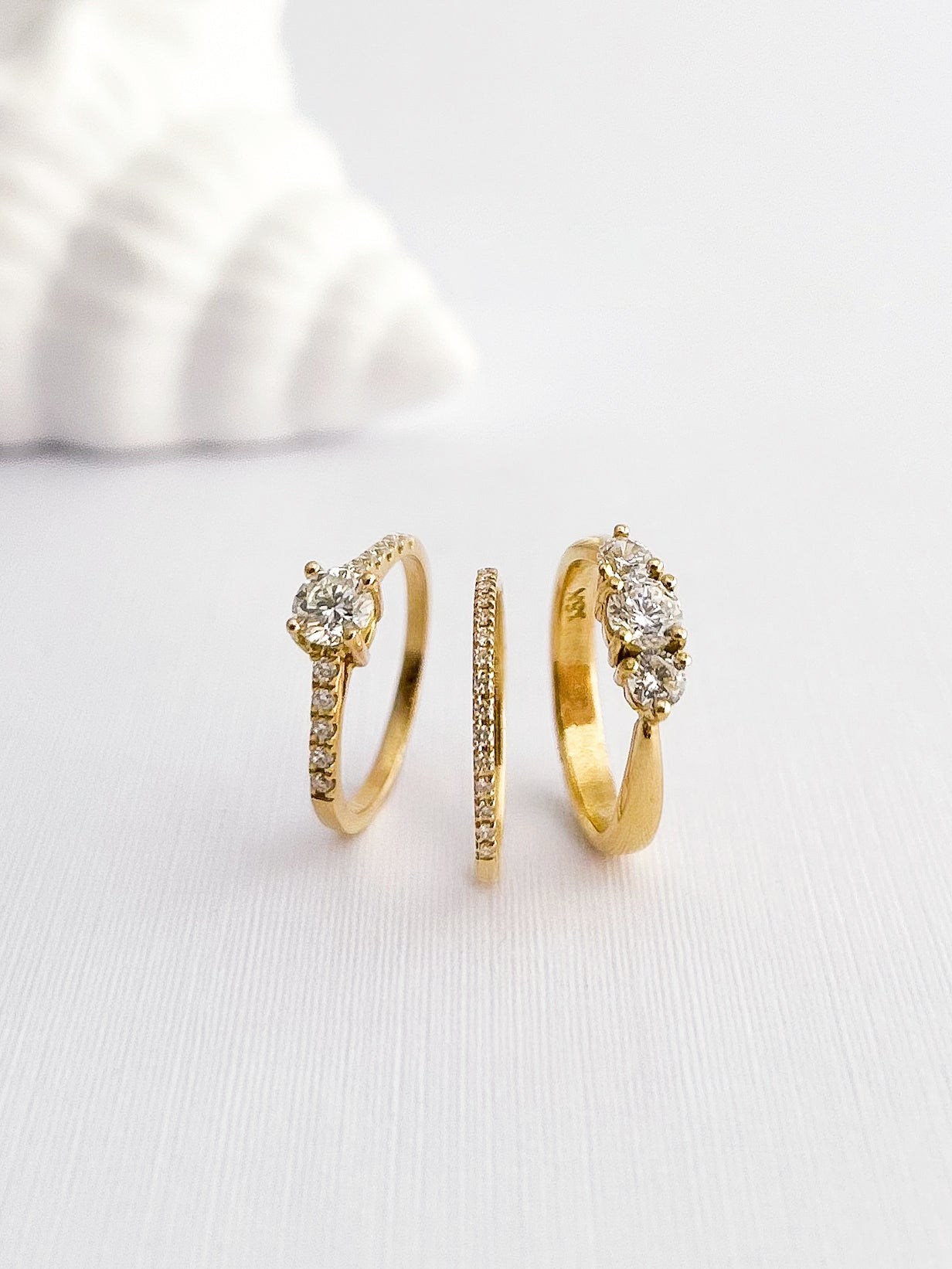Diamonds: Natural vs Lab-Grown
Choosing the perfect diamond starts with understanding your options. In this guide, we’ll explore the key differences between natural and lab-grown diamonds, from their formation and characteristics to their value and sustainability. We’ll also debunk common myths and reveal the truth about both options, so you can make a confident, informed decision.
Natural vs. Lab-Grown Diamonds: Myths, Truths, and How to Choose the Right One
Diamonds have long been a symbol of love, commitment, and timeless beauty. But in recent years, the rise of lab-grown diamonds has given consumers more choices than ever before. While natural and lab-grown diamonds may look identical to the naked eye, their origins, pricing, and value can vary significantly. In this blog, we’ll explore the key differences, the pros and cons of each, debunk common myths, and help you decide which is the right choice for you.

One is natural, one is lab-grown—can you spot the difference?
Natural Diamonds
Natural diamonds are formed deep within the Earth under extreme heat and pressure over billions of years. They are mined from the earth and then cut and polished to create the stunning gemstones we see in jewellery. Because of their rarity and long formation process, natural diamonds hold a unique historical and sentimental appeal.
Lab-Grown Diamonds
Lab-grown diamonds, also known as synthetic or cultured diamonds, are created in laboratories using advanced technology that replicates the natural diamond-growing process. These diamonds have the same chemical, physical, and optical properties as natural diamonds but are produced in a matter of weeks rather than billions of years.
Key Differences Between Natural and Lab-Grown Diamonds
-
Origin
Natural Diamonds: Formed naturally in the Earth.
Lab-Grown Diamonds: Created in a controlled laboratory setting.
-
Time to Form
Natural Diamonds: Billions of years.
Lab-Grown Diamonds: A few weeks.
-
Cost
Natural Diamonds: More expensive due to rarity.
Lab-Grown Diamonds: Typically 30-50% less expensive.
-
Sustainability
Natural Diamonds: Mining impacts the environment
Lab-Grown Diamonds: More eco-friendly, but still requires energy
-
Resale Value
Natural Diamonds: Generally holds or increases in value.
Lab-Grown Diamonds: Lower resale value compared to natural diamonds.
-
Uniqueness
Natural Diamonds: Each diamond is one-of-a-kind with natural inclusions.
Lab-Grown Diamonds: Often identical due to controlled production.
Pros and Cons of Natural vs Lab-Grown Diamonds
Natural Diamonds
Pros:
- Unique and rare, each diamond has its own natural inclusions
- Higher resale value over time
- Symbol of tradition and prestige
Cons:
- More expensive due to mining and rarity
- Environmental concerns associated with diamond mining
Lab-Grown Diamonds
Pros:
- More affordable for the same size and quality
- Ethically produced with less environmental impact
- Identical in appearance to natural diamonds
Cons:
- Lower resale value
- Some people prefer the natural rarity of earth-formed diamonds
Common Myths and the Truth About Diamonds
❌ Myth: Lab-grown diamonds are fake.
✅ Truth: Lab-grown diamonds are real diamonds with the same chemical composition as natural ones. They are not cubic zirconia or diamond simulants.
❌ Myth: Natural diamonds are always more beautiful than lab-grown diamonds.
✅ Truth: Both types can have the same brilliance and sparkle. The beauty of a diamond depends on its cut, clarity, and overall quality.
❌ Myth: Lab-grown diamonds are 100% eco-friendly.
✅ Truth: While they have a lower environmental impact than mined diamonds, lab-grown diamonds still require a lot of energy to produce.
❌ Myth: You can tell the difference between a natural and a lab-grown diamond just by looking.
✅ Truth: Even trained gemologists need specialized equipment to differentiate them.
Should You Choose a Natural or Lab-Grown Diamond?
The choice between a natural and lab-grown diamond depends on personal preference, budget, and values. Here are some factors to consider:
- Budget: If you want a larger or higher-quality diamond at a lower price, lab-grown diamonds offer excellent value.
- Sentimental Value: If you appreciate the rarity and history of natural diamonds, you may prefer an earth-mined stone.
- Sustainability & Ethics: If reducing environmental impact is a priority, lab-grown diamonds are a great choice.
- Resale Value: If long-term value retention is important, natural diamonds tend to hold their worth better.
Final Thoughts
Both natural and lab-grown diamonds have their unique benefits, and the right choice ultimately depends on what matters most to you. Whether you’re looking for a timeless natural diamond or an ethical, budget-friendly alternative, we’re here to guide you through the selection process.
Looking for expert advice? Book a consultation with us today and find the perfect diamond for you!
